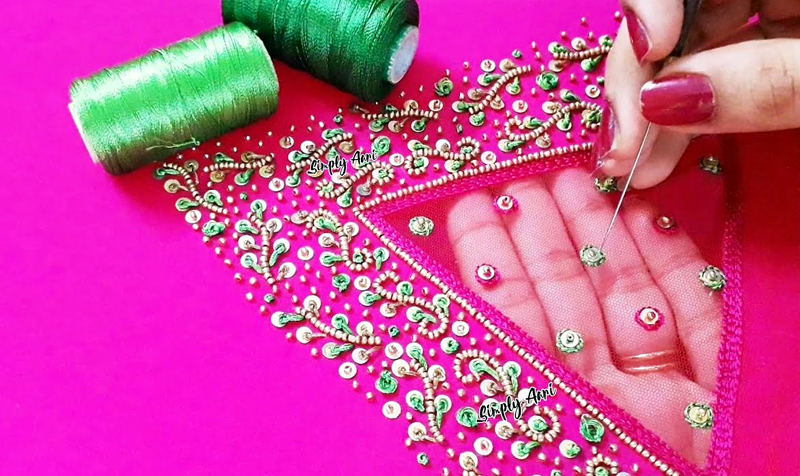About Course
Aari work is a type of intricate hand embroidery that originated in India, believed to have traveled from Uttar Pradesh to Gujarat, where it flourished, particularly within the Mochi (cobbler) community. It gained popularity among the royals of Gujarat and later spread to other parts of India.
Materials Used in Aari Work:
- Aari Needle: A long needle with a hook at the end, available in various sizes.
- Embroidery Frame (Adda/Khatla): A wooden rectangular frame to hold the fabric taut. Collapsible frames are also available.
- Fabric: Common choices include silk, cotton, georgette, and chiffon, depending on the garment and design.
- Threads:
- Silk threads for traditional and fine work.
- Metallic threads (zari) for a shimmering effect.
- Cotton threads for more casual designs.
- Woolen threads can also be used.
- Embellishments:
- Beads: Glass, plastic, metal, and seed beads of various sizes and shapes.
- Sequins (Sitara/Chamki): Available in different shapes, sizes, and colors to add sparkle.
- Stones: Kundan, rhinestones, and semi-precious stones for a richer look.
- Pearls: For a classic and elegant touch.
- Bullion wires (Kasab): Metallic coils used for outlining and adding texture.
- Tracing Tools: Pencils, fabric markers, or chalk to transfer designs onto the fabric. These should be easily removable.
- Scissors: Sharp scissors for cutting threads and fabric.
- Awl: A pointed tool to create small holes in the fabric for beadwork.
- Backing Material: Lightweight cotton or non-woven fabric to provide support to the embroidery.
- Optional Tools: Needle threader, magnifying glass, thimble, thread organizer, and design templates.
Applications of Aari Work:
Aari work is highly valued for its beauty and is commonly used to adorn:
- Bridal wear: Sarees, blouses, and lehengas often feature intricate aari work with heavy embellishments.
- Sarees: Adding decorative borders, pallus, and all-over designs.
- Blouses: Especially for weddings and festive occasions, with elaborate necklines, sleeves, and back designs.
- Kurtis and other ethnic wear: Enhancing the elegance of everyday and party wear.
- Accessories: Bags, clutches, and decorative items.
- Home decor: Sometimes used on wall hangings and other textile crafts.
Modern Trends:
While traditional motifs remain popular, aari work has also adapted to contemporary designs and is seen in fusion wear and modern silhouettes. Computer-aided techniques are also used today to simplify and speed up the process for certain types of aari work, but hand-done aari embroidery continues to be highly prized for its craftsmanship and artistry.
If you are interested in learning or purchasing aari work items, you can find numerous resources online, including tutorials, suppliers of materials, and artisans selling their creations.



